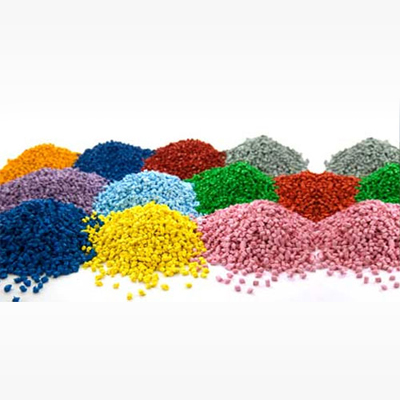The Intersection of Plastics and Nanotechnology: A New Era

Introduction
The advent of nanotechnology has revolutionized various industries, and plastics are no exception. The intersection of plastics and nanotechnology heralds a new era of innovation, offering unprecedented opportunities for enhancing the properties and functionalities of plastic materials. This synergy has the potential to transform multiple sectors, including healthcare, automotive, electronics, and packaging, by introducing materials with superior strength, durability, and versatility. This article delves into the profound impact of nanotechnology on plastics, exploring its applications, benefits, challenges, and future prospects.
A. Understanding Nanotechnology in Plastics
Nanotechnology involves manipulating matter at the nanometer scale (one billionth of a meter), where unique physical, chemical, and biological properties emerge. When integrated with plastics, nanotechnology can significantly improve their mechanical, thermal, and barrier properties. These enhancements are achieved by incorporating nanoparticles, such as carbon nanotubes, nanoclays, and metal oxides, into plastic matrices.
B. Types of Nanomaterials Used in Plastics
Carbon Nanotubes (CNTs): These cylindrical nanostructures offer exceptional mechanical strength and electrical conductivity. When embedded in plastics, CNTs can create lightweight, yet incredibly strong and conductive materials.
Nanoclays: These plate-like nanoparticles enhance the barrier properties of plastics, making them more resistant to gases and moisture. This makes nanoclay-infused plastics ideal for packaging applications.
Metal Oxide Nanoparticles: Incorporating nanoparticles like titanium dioxide and zinc oxide into plastics can improve their UV resistance and antimicrobial properties, extending their lifespan and hygiene standards.
C. Applications of Nanotechnology-Enhanced Plastics
The integration of nanotechnology in plastics has led to remarkable advancements across various industries. Here are some notable applications:
Healthcare
Nanotechnology-enhanced plastics are revolutionizing the healthcare sector by enabling the development of advanced medical devices and implants. For instance, biocompatible nanocomposites are used in prosthetics and orthopedic implants, offering improved strength and longevity. Additionally, antimicrobial nanomaterials are incorporated into medical packaging and surfaces to reduce the risk of infections.
Automotive
The automotive industry benefits significantly from nanotechnology-enhanced plastics. These materials contribute to weight reduction, improved fuel efficiency, and enhanced safety features. For example, carbon nanotube-reinforced plastics are used in vehicle components to reduce weight without compromising strength, leading to better fuel economy and lower emissions.
Electronics
In the electronics sector, nanotechnology-enhanced plastics are used to create flexible and lightweight electronic components. Nanocomposites with excellent electrical conductivity are utilized in sensors, displays, and batteries. These materials enable the production of more durable and efficient electronic devices.
Packaging
Nanotechnology has revolutionized the packaging industry by introducing materials with superior barrier properties. Nanoclays and metal oxide nanoparticles enhance the impermeability of plastics to gases and moisture, extending the shelf life of packaged goods. Additionally, antimicrobial nanomaterials ensure the hygiene and safety of food packaging.
D. Benefits of Nanotechnology in Plastics
The intersection of plastics and nanotechnology offers numerous benefits, including:
a. Enhanced Mechanical Properties: Nanotechnology improves the strength, toughness, and durability of plastics, making them suitable for demanding applications.
b. Improved Thermal Stability: Nanomaterials enhance the thermal stability of plastics, allowing them to withstand higher temperatures without degradation.
c. Superior Barrier Properties: Nanotechnology enhances the barrier properties of plastics, making them more resistant to gases, moisture, and chemicals.
d. Antimicrobial Properties: The incorporation of antimicrobial nanomaterials into plastics helps reduce the risk of microbial contamination in healthcare, food packaging, and other applications.
e. Electrical Conductivity: Nanotechnology can impart electrical conductivity to plastics, enabling their use in electronic applications.
E. Challenges and Considerations
Despite the numerous benefits, the integration of nanotechnology in plastics poses several challenges and considerations:
Cost: The production of nanomaterials and their incorporation into plastics can be expensive, which may limit their widespread adoption.
Environmental Impact: The environmental impact of nanotechnology-enhanced plastics, particularly regarding their disposal and recycling, needs to be carefully evaluated.
Health and Safety: The potential health risks associated with the exposure to nanoparticles during manufacturing, use, and disposal must be addressed through rigorous safety protocols.
Regulatory Issues: The regulatory landscape for nanotechnology-enhanced plastics is still evolving. Clear guidelines and standards are needed to ensure their safe and effective use.
F. Future Prospects
The future of nanotechnology-enhanced plastics looks promising, with ongoing research and development aimed at overcoming current challenges and unlocking new possibilities. Some potential future directions include:
Sustainable Nanocomposites: Researchers are exploring the use of bio-based nanomaterials to create environmentally friendly nanocomposites that combine the benefits of nanotechnology with sustainability.
Smart Plastics: The development of smart plastics with embedded sensors and responsive properties can enable applications in areas such as wearable electronics, healthcare diagnostics, and environmental monitoring.
Advanced Manufacturing Techniques: Innovations in manufacturing techniques, such as 3D printing with nanocomposites, can enable the production of complex and customized plastic components with enhanced properties.
Multifunctional Nanocomposites: Future research may lead to the development of multifunctional nanocomposites that combine multiple properties, such as strength, conductivity, and antimicrobial activity, in a single material.
Conclusion:
The intersection of plastics and nanotechnology marks a new era of innovation, offering unprecedented opportunities for enhancing the properties and functionalities of plastic materials. From healthcare to automotive, electronics, and packaging, nanotechnology-enhanced plastics are transforming various industries by providing materials with superior strength, durability, and versatility. While challenges remain, ongoing research and development are paving the way for a future where nanotechnology and plastics continue to evolve, bringing new possibilities and solutions to meet the demands of modern society.



